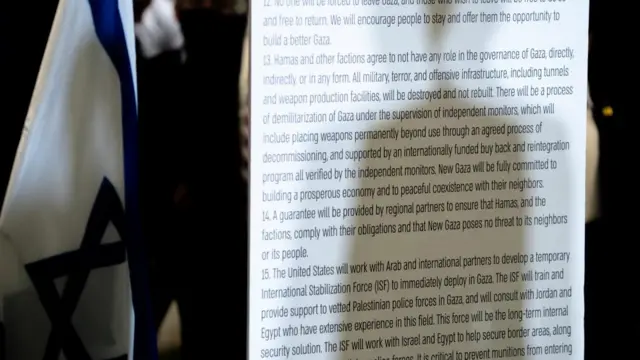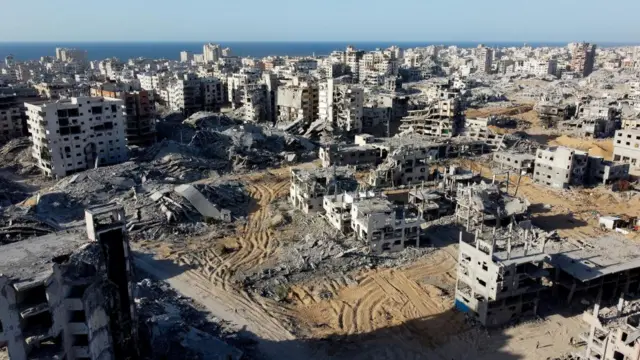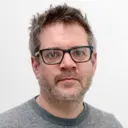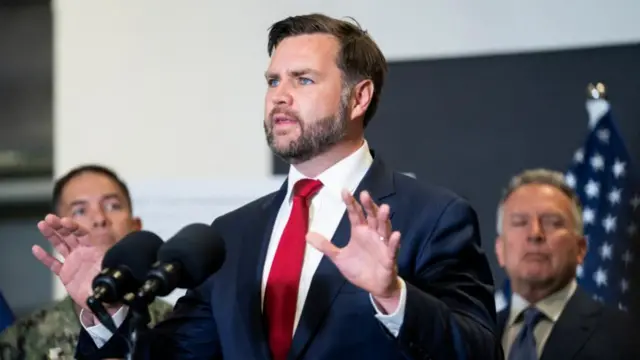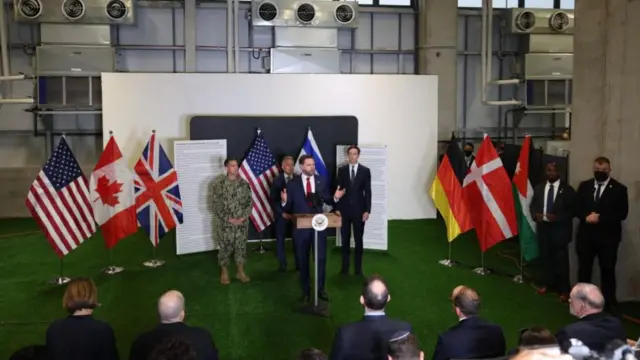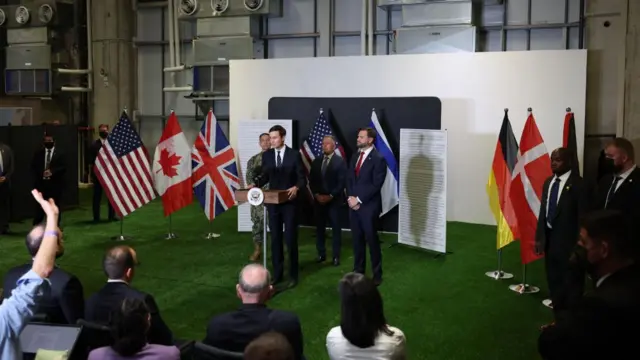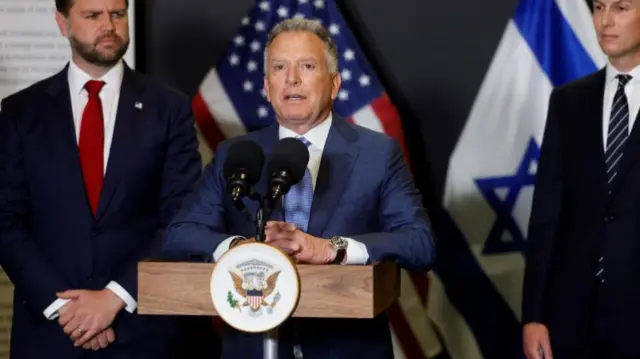
Despite recent violence, Vance remains 'very optimistic' about Gaza ceasefirepublished at 18:22 BST 21 October
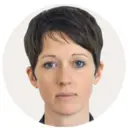 Lucy Williamson
Lucy Williamson
Reporting from JD Vance's news conference
 Image source, Reuters
Image source, ReutersSpeaking to media in a cavernous concrete hangar laid with bright green astroturf, the US vice-president came with an upbeat message, at a critical time for Donald Trump’s peace deal.
The choice of venue – a new US-led centre to co-ordinate foreign forces meant to secure Gaza in the next stage of the deal – was meant as a sign that the deal was moving forward.
JD Vance said he had "real optimism" the ceasefire would hold, despite it briefly fracturing two days ago.
"There are going to be moments where it looks like things aren't going particularly well, but given that and given the history of conflict, I think that everybody should be proud of where we are today," he said. "Right now I feel very optimistic. Can I say with 100% certainty that it's gonna work? No. But you don't do difficult things by only doing what's 100% certain."
Both Israel and Hamas have reaped rewards from phase one of the deal. Phase two requires them to make tough concessions, including giving up their respective control in Gaza.
Vance said the US did not have an explicit deadline for Hamas to disarm, but that if the group did not comply, "very bad things" would happen.
Israel’s Prime Minister Benjamin Netanyahu has insisted that any violation by Hamas – including a failure to disarm – would allow Israel to return to war.
The US has so far shown more tolerance for hiccups and delays in this process. And several Israeli commentators have pointed out that the real decisions over Israel’s military action in Gaza are now being made in Washington.
We are closing our live coverage for now. You can read our news story here for the latest development. Thank you for joining us.

